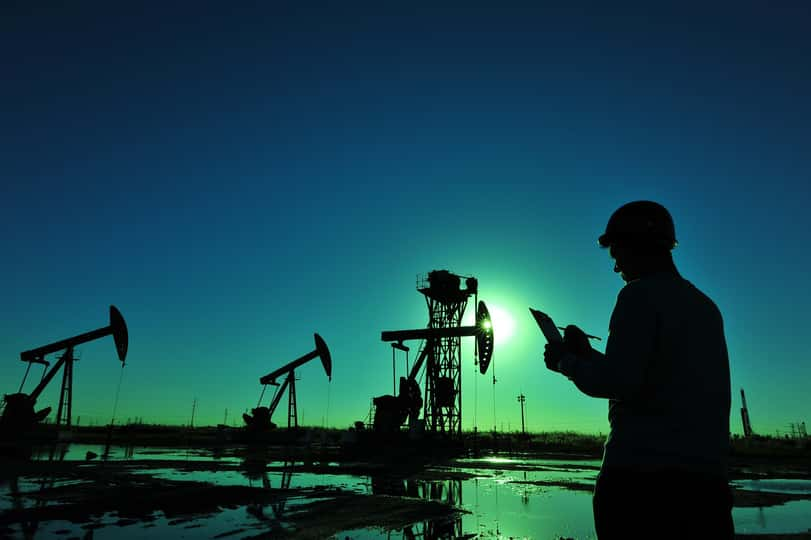-
The natural gas market has gone through many changes through the years
-
Natural gas began trading in the futures exchange in 1990, and the price remains near the low
-
2021 is a critical year for the energy commodity as a changing of the guard in the US will determine policy and future production
Natural gas is one of the most volatile commodities that trade on the futures exchange. The wide price variance at a time causes trend-following speculators to flock to the futures market because of the potential for substantial percentage moves. The natural gas price has a long history of doubling, halving, or more over short periods. The most recent example came from late June 2020 through mid-October when the price of the energy commodity more than doubled on the continuous futures contract.
Volatility can be a nightmare for investors, but it creates a paradise of opportunities for nimble traders with their fingers on the pulse of markets. During the first year of trading natural gas futures on the CME’s NYMEX division in 1990, the total number of open long and short positions remained below 12,000 contracts. In 1993, the open interest metric surpassed the 100,000-contract level for the first time. In 2002, it reached 500,000 contracts, and the one-million level gave way in late 2011. Open interest has not dipped below one million contracts since July 2016. The low for 2016 came in October at 1.166 million contracts.
The natural gas market remains magnetic for speculators. The growing number of producers and consumers that use the futures market to hedge output and requirements has also expanded over the years. We could be heading into a new era for the natural gas market as the United States’ political landscape changed in early November. The extent of that change will have to wait until January when the state of Georgia goes to the polls to determine the balance of power in the US Senate. The United States Natural Gas Fund (UNG - Get Rating) moves higher and lower with the NYMEX futures price. The BOIL and KOLD ETN products magnify the price action on a short-term basis.
The natural gas market has gone through many changes through the years
During the first two decades of natural gas trading on the CME’s NYMEX division, the market slowly built liquidity. Massive price volatility in 2005 and 2008, when Hurricanes Katrina and Rita damaged infrastructure along the US coast along the Gulf of Mexico, caused speculative interest to rise. The delivery point for NYMEX futures is the Henry Hub in Erath, Louisiana. However, it was the third decade of trading, where the fundamentals radically changed.
In 2011, the late T. Boone Pickens told Forbes that the US has natural gas reserves equivalent to three times that of Saudi Arabia’s known 260 billion-barrel oil reserve on a barrel of oil equivalent comparison. Massive discoveries of reserves in the Marcellus and Utica shale regions of the US increased the supply side of the equation. With quadrillions of cubic feet of reserves, the potential for natural gas exploded.
Since necessity is the mother of invention, the US quickly moved to uncover new demand verticals. Natural gas replaced coal in power generation. Liquefying natural gas allowed for the commodity to travel beyond the pipelines via ocean vessels. Exports to countries where the price was far higher ignited the burgeoning and expanding export business in the natural gas market.
The growth of supply and demand caused volatility to decline as open interest in the natural gas market grew.
Natural gas began trading in the futures exchange in 1990, and the price remains near the low
The last time natural gas traded above $6.50 per MMBtu was in 2008.
Source: CQG
As the quarterly chart shows, the range in nearby natural gas futures since 1990 has been from $1.02 to $15.65 per MMBtu. In late June 2020, the price came within 41.2 cents of the low from 1991 when the energy commodity fell to a twenty-five-year bottom.
The lowest price since 1995 led to a recovery, which lifted the natural gas price over the past two quarters. A close above $2.545 per MMBtu at the end of December would market the third consecutive quarter of gains. The long-term chart illustrates that price momentum and relative strength indicators turned higher since reaching oversold conditions earlier this year. Even with the price at just below the $3 level at the end of last week, it remains a lot closer to the low than the three-decade peak.
Seasonality has played a role in the rally, but politics maybe even more critical in 2020, which is anything but an ordinary year.
2021 is a critical year for the energy commodity as a changing of the guard in the US will determine policy and future production
Natural gas traders have Georgia on their minds as the energy commodity moves into the peak season. Demand tends to peak in January; at the same time, voters in Georgia will go to the polls to elect two senators in a runoff election. The contest will determine if Democrats control both houses of Congress or if Republicans will retain a majority in the Senate and present a check to Democrats’ plans.
Republicans advocate for energy independence and support the extraction of fossil fuels from the earth’s crust. Democrats favor a green plan with far more regulations on energy production that will lead to lower output. Oil products and natural gas prices could rise substantially if production declines. Moreover, there could be significant job losses on the horizon in the energy sector.
Over the past years, natural gas prices tend to peak in November through January as the coldest months of the year arrive, and the uncertainty of temperatures and demand push prices to seasonal highs. In late 2020 and early 2021, speculation over the Georgia Senate contests could trump the weather in the natural gas arena as they will determine the future of US energy policy and the nation’s output.
Want More Great Investing Ideas?
9 “MUST OWN” Growth Stocks for 2021
Is the Bull Market Back on Track?
5 WINNING Stocks Chart Patterns
UNG shares were trading at $10.32 per share on Tuesday morning, up $0.01 (+0.10%). Year-to-date, UNG has declined -38.79%, versus a 13.14% rise in the benchmark S&P 500 index during the same period.
About the Author: Andrew Hecht

Andy spent nearly 35 years on Wall Street and is a sought-after commodity and futures trader, an options expert and analyst. In addition to working with StockNews, he is a top ranked author on Seeking Alpha. Learn more about Andy’s background, along with links to his most recent articles. More...
More Resources for the Stocks in this Article
| Ticker | POWR Rating | Industry Rank | Rank in Industry |
| UNG | Get Rating | Get Rating | Get Rating |






